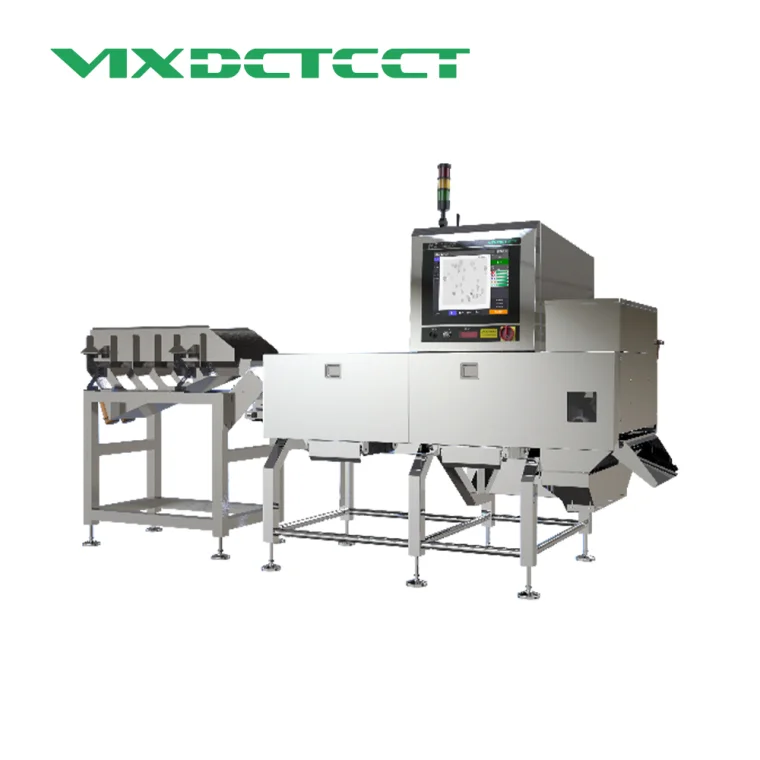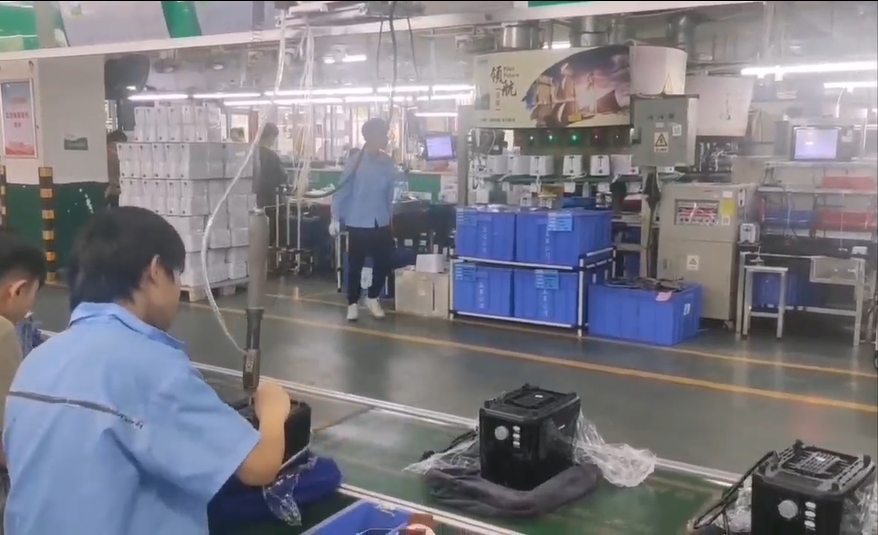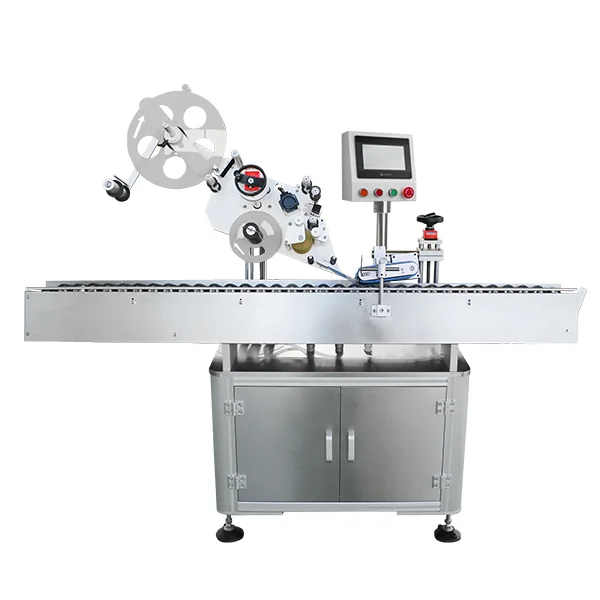In the food safety industry, X-ray food inspection equipment has gradually become an indispensable key equipment in the food production and packaging process. As consumers' requirements for food safety and quality continue to increase, food manufacturers are also paying more and more attention to the application of food inspection technology. X-ray technology has become one of the preferred methods for identifying foreign matter and quality defects in food with its efficient and accurate detection capabilities. However, whether the performance of X-ray food inspection equipment can adapt to food in different packaging forms is still a big question for many people when choosing this equipment. This article will explore in depth whether X-ray food inspection equipment can effectively detect food in various packages, analyze the impact of different packaging types on the detection effect, and provide some factors to consider when purchasing equipment.
1. Working principle of X-ray food inspection equipment
Before understanding how X-ray food inspection equipment detects food in different packages, we first need to understand its basic working principle. X-ray food inspection equipment uses the characteristics of X-rays penetrating objects to obtain detailed images of their internal structures by scanning the inside of food. When the X-ray beam passes through food, the attenuation of the X-rays will change according to the different densities and components of the food. The detector in the equipment can sense these changes convert the signal into an image, and analyze whether there are foreign objects such as metal, glass, plastic, stone, etc. through image processing software.
Through this process, X-ray food inspection equipment can detect tiny foreign objects that cannot be detected by the naked eye, and can also detect other quality problems of food, such as uneven filling, cracks, bubbles, etc. Compared with traditional detection methods such as metal detectors and visual inspection systems, X-ray food inspection equipment has higher detection accuracy and wide applicability.

2. The influence of different packaging forms on X-ray food detection
The working effect of X-ray food inspection equipment is greatly affected by the form of food packaging. Different packaging materials and packaging methods have a significant impact on the penetration of X-rays. Therefore, when the equipment detects foods in different packages, it must be optimized according to the characteristics of the packaging materials. Below we will analyze the impact of several common packaging forms on the X-ray detection effect.
Plastic packaging: Plastic packaging is the most common type of modern food packaging and is widely used in various ready-to-eat foods, beverages, condiments, etc. Plastic packaging is characterized by lightness, moisture resistance, and low cost, but its density is relatively low and its penetration to X-rays is strong. This allows X-rays to effectively penetrate plastic packaging and clearly show foreign objects or quality defects inside the food.
However, the transparency and density issues of plastic packaging may make it difficult to detect certain small-sized foreign objects (such as small particles of plastic or paper scraps), especially when there are bubbles or uneven filling in the food packaging. Therefore, in order to improve the detection accuracy, X-ray food inspection equipment needs to optimize parameters such as scanning speed, resolution, and scanning angle to ensure the detection effect when facing plastic packaging.
Aluminum foil packaging: Aluminum foil packaging is widely used in products such as instant noodles, beverages, and frozen foods. The biggest feature of aluminum foil packaging is its good barrier and sealing properties, which can effectively prevent oxidation and moisture loss. However, the high density of aluminum foil causes X-rays to attenuate more when passing through aluminum foil, so the ability of X-rays to penetrate aluminum foil packaging is weak. In this case, X-ray food inspection equipment usually needs to make more parameter adjustments to ensure that it can penetrate the aluminum foil packaging and detect foreign objects inside the food.
To solve this problem, modern X-ray food inspection equipment is usually equipped with a stronger X-ray source or uses a higher scanning resolution to improve detection accuracy. In addition, the equipment may use multi-angle scanning technology to scan the package at multiple angles to compensate for the blocking effect of the packaging material on X-rays.
Glass packaging: Glass packaging is usually used for high-end beverages, alcohol, sauces, and other foods. The transparency and relatively high density of glass packaging make it more complicated to perform X-ray detection. Although the attenuation of X-rays by glass itself is not as obvious as metal and aluminum foil, the density of glass can still affect the penetration effect of X-rays.
A notable feature of glass packaging is its transparency. X-rays can easily penetrate glass, but if the glass packaging contains quality problems such as bubbles and cracks, these problems can also be detected by X-rays. Unlike plastic packaging, it is more difficult to hide foreign objects in glass packaging. The equipment can clearly detect foreign objects such as metal, glass, and stones inside.
Paper packaging: Paper packaging is more common in dry goods, candies, biscuits, and other foods. The density of paper packaging is relatively low, X-rays can easily penetrate, and the detection effect is better. However, due to the relatively loose structure of the paper itself, its attenuation of X-rays is small, so there may be slight false alarms in the detection, especially when a small amount of foreign matter is entrained in the paper packaging.
In addition, common problems with paper packaging are the possible seams, folds, gaps, etc., which are prone to breeding contaminants or foreign matter. In this case, X-ray food inspection equipment can effectively identify whether there are foreign objects in the package.
Metal packaging: Metal packaging (such as cans) is widely used for long-term storage of food due to its excellent corrosion resistance and sealing properties. Metal packaging has a strong blocking effect on X-rays because the high density of metal makes it difficult for X-rays to penetrate. Due to this high-density barrier, X-ray food inspection equipment may need to use special techniques or increase the power of X-rays to ensure good penetration when detecting metal-packaged food.
In order to compensate for the blocking effect of metal packaging, modern X-ray equipment is usually equipped with a powerful X-ray source and uses multi-angle scanning technology to ensure that the equipment can detect foreign matter inside without damaging the packaging.
3. How to improve the detection effect of X-ray food inspection equipment?
In order to ensure that X-ray food inspection equipment can effectively detect foods in different packaging, the following points are particularly important:
Equipment selection: It is crucial to choose an X-ray device that suits your production line and packaging form. Foods in different packages have different blocking capabilities for X-rays. When purchasing, you need to choose the specifications and functions of the equipment according to the actual packaging material and food type.
Regular calibration and maintenance: X-ray food inspection equipment should be calibrated regularly during use to ensure its detection accuracy. Changes in packaging materials, adjustments to production line speeds, etc. may affect the detection effect of the equipment, so regular maintenance and adjustment are the key to ensuring that the equipment works efficiently.
Optimize scanning parameters: For foods in different packaging forms, the detection effect can be improved by adjusting parameters such as X-ray power, scanning resolution, and scanning angle. According to the density and transparency of the packaging material, flexible adjustment of equipment settings is an effective means to improve detection accuracy.
Multi-angle scanning technology: Some advanced X-ray equipment uses multi-angle scanning technology, which can scan the packaging at multiple angles, thereby compensating for the blocking effect of packaging materials on X-rays and improving the coverage of detection.
Image processing software: X-ray food inspection equipment is usually equipped with powerful image processing software, which can identify and analyze foreign matter and quality problems inside food through intelligent algorithms. Choosing a device with powerful image processing software can improve the accuracy of foreign matter detection and reduce false positives and false negatives.
X-ray food inspection equipment can detect a variety of foods in different packages, but the characteristics of different packaging materials and packaging forms have different effects on the detection effect. For low-density materials such as plastic packaging and glass packaging, the equipment can easily penetrate and detect foreign matter; while for high-density materials such as aluminum foil packaging and metal packaging, a stronger X-ray source and special scanning technology may be required.
When choosing X-ray food inspection equipment, manufacturers need to comprehensively consider the functions and performance of the equipment based on factors such as food packaging type, production line requirements, and detection accuracy. Through reasonable equipment configuration and optimized detection parameters, X-ray food inspection equipment can meet the detection needs of various foods in different packages while ensuring food safety and quality.
As a leading X-ray food inspection equipment supplier, we are committed to providing efficient and accurate detection solutions for the global food industry. We not only provide customized equipment selection but also support comprehensive after-sales services, including equipment installation, training, maintenance, and regular calibration, to help customers optimize production processes and improve the efficiency and accuracy of food testing. As an industry leader, we will continue to innovate, promote the development of food safety testing technology, and provide reliable quality assurance for global food manufacturers.
www.vixdetect.net
Shanghai Vixdetect Inspection Equipment Co., Ltd.


